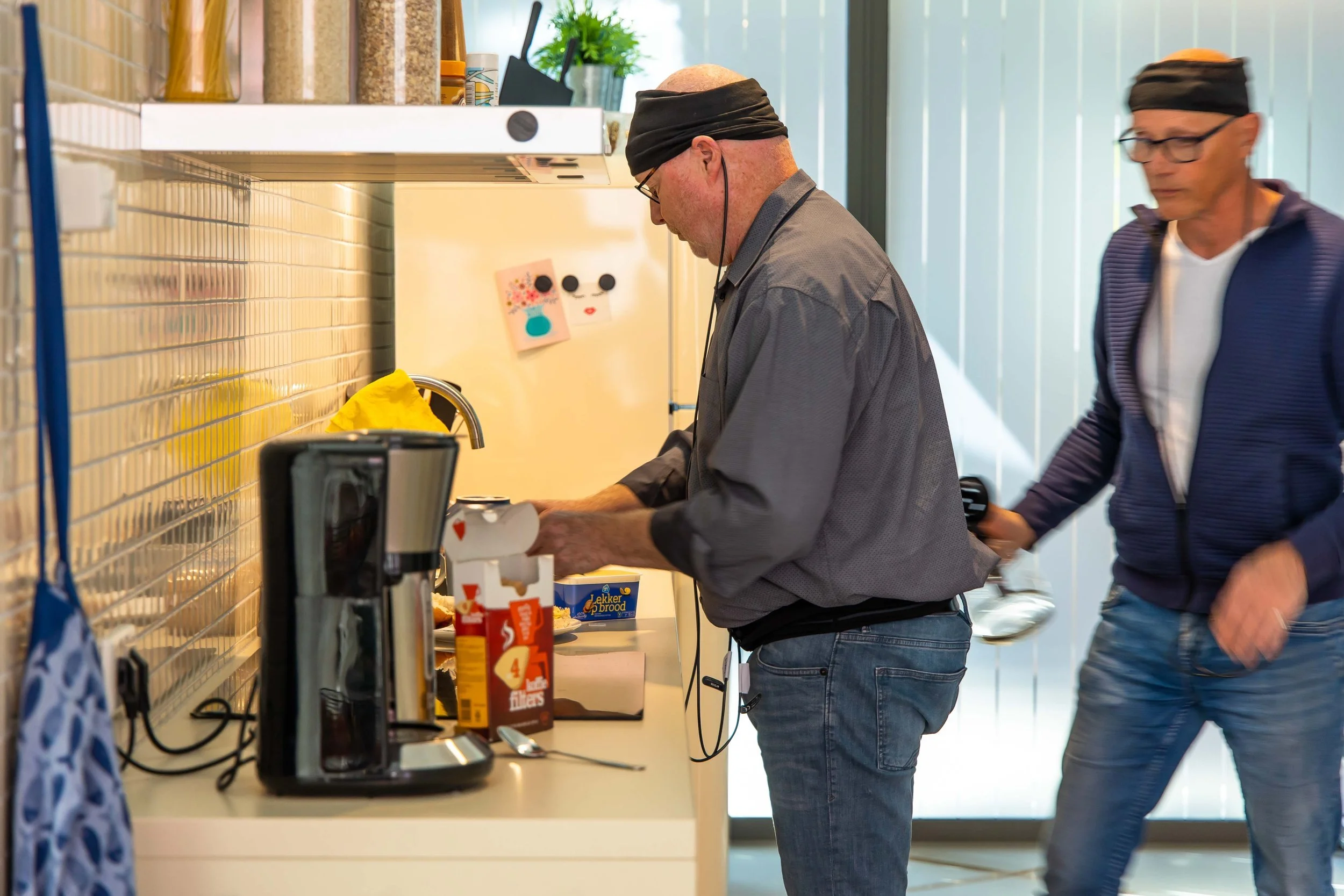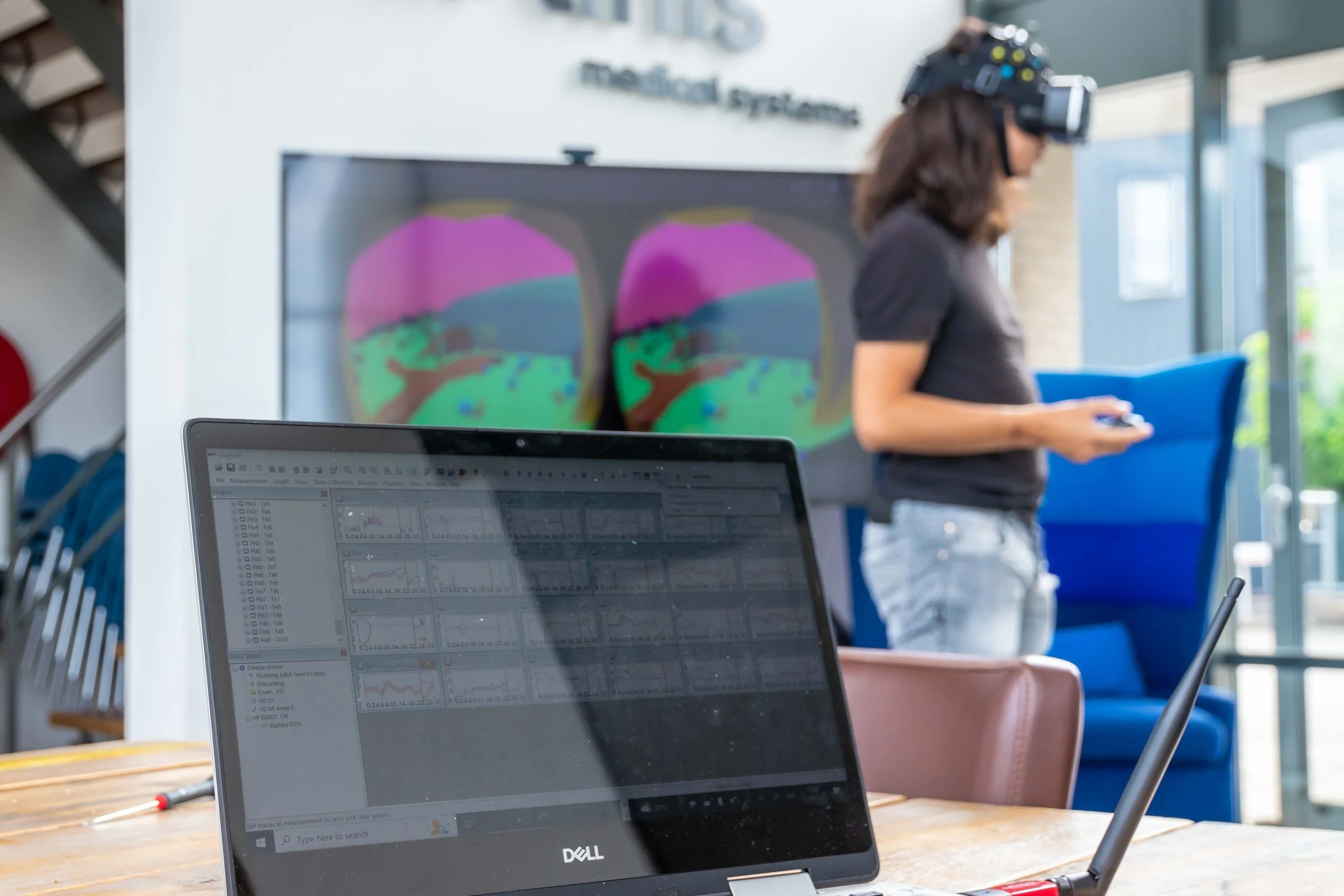Publication Overview with our NIRS devices in 2022 – Brain
Near-Infrared spectroscopy (NIRS) is a non-invasive technology that measures relative changes in oxygenated (O2Hb) and deoxygenated (HHb) hemoglobin in local tissue. Functional near-infrared spectroscopy (fNIRS) can be used to measure brain activation from any cortical region. In 2022, our fNIRS devices were again used in multiple application areas to assess hemodynamics in the brain. This blog post gives an overview of fNIRS application fields in 2022 and highlights certain publications per category.
We are proud that in 2022 several papers using our NIRS systems to measure brain activity were published. (f)NIRS was applied in multiple fields, such as clinical research, neurosciences and hypoxia; and different cortical brain regions, such as the prefrontal and motor cortex.
Application areas of studies assessing brain activity
Devices used to assess brain activity
In the following, we discuss different application categories and device possibilities per category and highlight papers published in each application field:
Cortical brain research
Prefrontal cortex - Cognitive Studies
In 2022, 40 publications investigating prefrontal brain activity with Artinis NIRS devices could be found. Devices used were the PortaLite, OctaMon – which are both optimized for prefrontal measurements – and the OxyMon and Brite.
The papers focusing on prefrontal brain activation assessment published in 2022 can be categorized into three categories: cognitive neuroscience, applied neuroscience, and clinical neuroscience. As a later paragraph incorporates papers on clinical and rehabilitation research, the following focuses on cognitive studies.
Research areas with prefrontal cortex publications in 2022
Cognitive studies incorporated papers using fNIRS to investigate cognitive training, exercise intervention, and mental workload. As one example of the latter, Frutueux et al. used the OxyMon to examine prefrontal brain activity as a function of cognitive load performing an N-back and random number generation task. Findings indicated that the hemodynamic activity in the prefrontal cortex increased parametrically with the mental workload.
To investigate the effects of customized cognitive training on prefrontal cortex neural efficiency Jeun et al. first developed an algorithm to predict a subject’s cognitive task performance level, based on prefrontal fNIRS signals measured with the OctaMon during various cognitive tasks. Next, subjects engaged in virtual reality-based spatial cognitive training, with customized difficulty levels. Hemodynamic prefrontal brain activity and the trail-making test, a task that measures executive function, were used as values to investigate the effects of customized cognitive training on neural efficiency. Subjects showed significant improvements in performance on the trail-making test and a significant decrease in prefrontal brain activity. Findings implied that personalized cognitive training-induced neural efficiency.
Motor cortex
In 2022, two publications investigating the activation of the motor areas using Artinis fNIRS devices were found. One of these publications by Bonnal et al. employed our Brite system in a walking task, which is suitable for studies including movement, as it is truly wearable and lightweight. Changes in O2Hb and HHb were measured in the cortical motor areas, while healthy participants walked with the assistance of an exoskeleton. In order to study whether motor activation is influenced by physical effort and force, they manipulated the degree of assistance that the exoskeleton provided, resulting in 4 levels. Changes in O2Hb were significantly different between assisted and unassisted conditions, with the latter showing a higher increase in regard to the baseline. These findings suggest that the level of activation in brain regions involved in motor control is associated with the amount of physical effort generated, and are also relevant for rehabilitation studies using robot-mediated gait training.
Clinical and Rehabilitation
In clinical research, NIRS can be applied to investigate the influence of different diseases on the brain, the underlying causes of disorders, and the effect of different therapeutical means and rehabilitation. In 2022, 15 papers using NIRS in clinical research were published, using the PortaLite, Brite, OctaMon and OxyMon.
Multiple clinical application areas, including Neurology, Psychiatry / Psychology, Intensive Care, and others (pain management, autoimmune diseases, and multimorbidity), could be identified.
Clinical application areas with fNIRS publications 2022
In 2022, the clinical application field allocating the most fNIRS publications is neurology. fNIRS was used in patients suffering from neurological diseases, such as Parkinson’s Disease (PD) or brain injury. Ding et al., for instance, assessed the effect of treadmill training to improve mobility and gait in PD patients on brain connectivity and activity compared to healthy controls. fNIRS was measured on the prefrontal cortex using the PortaLite.
In a study for pain management performed by Du et al. the use of transcutaneous electrical nerve stimulation (TENS) as a therapy to manage pain in patients suffering from myofascial pain syndrome was evaluated by measuring prefrontal cortex activation. Participants were randomly divided into experimental (receiving TENS) and control group and fNIRS was measured before and after intervention using the Brite. A significant reduction of brain activity in cortical regions involved in pain perception was found in the experimental group, suggesting a relieving effect of TENS on pain in chronic pain patients.
Hypoxia and Altitude
NIRS can also be used to study brain oxygenation and activity changes in hypoxic conditions or in high altitudes. In 2022, three papers using NIRS in hypoxia studies were published using PortaLite and OxyMon. Rosales et al. investigated the effects of acute normobaric and hypobaric hypoxia on human physiology by measuring NIRS in both cerebral (prefrontal and motor cortex), as well as muscle (vastus lateralis) with the OxyMon. Findings indicated that muscle oxygenation decreased and HHb increased during exercise in all conditions. Brain oxygenation was lower in high altitude hypoxia compared to sea level.
Sports Science
In 2022, five studies applying Artinis fNIRS devices to assess prefrontal cortex activation during various sports or exercises were published using mainly portable devices, such as PortaLite, OctaMon or Brite, but also the OxyMon. Sathe et al. for instance used the Brite to measure prefrontal oxygenation during a dynamic balance test in sporting and non-sporting young adults. Findings showed that the sporting group scored significantly better than the non-sporting group. This was also visible in differences between both groups in areas of prefrontal cortex activation.
fNIRS Multimodality
fNIRS can be combined with other technologies, such as Electroencephalogram (EEG) or transcranial stimulation (tES), to for instance to achieve a greater picture of brain activity, or assess therapy strategies. In 2022, four papers combining fNIRS with other modality were published – two for fNIRS-EEG combination and two for fNIRS-tES combination – using either the OctaMon or PortaLite.
fNIRS and EEG provide complementary information which can be utilized to improve the performance of machine learning algorithms in cognitive or emotional states detection. Chu et al. aimed to detect mental workload using 64-channel EEG and 2-channel fNIRS data. Participats performed a MATB block task with different difficulty levels randomized among subjects. The correlation between HHb or O2Hb and EEG frequency band power was calculated and included in the feature set along with EEG power spectral features to detect mental work-load. Then, feature selection was used to minimize the number of EEG channels to achieve a minimalistic and versatile setup. Results showed that an increase in the number of EEG channels can improve the classification accuracy to an extent. Additionally, θ power of EEG and concentration of O2Hb in the prefrontal region increased, while the HHb concentration decreased with task difficulty.
Virtual Reality
fNIRS is increasingly used to measure brain activity during Virtual Reality (VR) experiments. VR enables mimicry of real-life scenarios and can therefore be used in different application fields, for instance in clinical and psychological studies to test therapy and exposure, or in developmental and cognitive studies. In 2022 four publications using our fNIRS devices combined with VR could be found.
De With et al. used fNIRS to monitor the level of fear in subjects during VR scenarios involving height and no height in anxiety disorder patients and control group. Prefrontal activation was measured using the Brite. The between-group analysis revealed that the response in the fear group is stronger compared to the control group. Within-group analysis showed a significant difference between the response to trial with fear and no fear. fNIRS-based classification yielded above 70% accuracy for fear detection in both subject and subject-independent classifiers.
Would you like to learn more about a certain application area or device? Then feel free to contact us at askforinfo@artinis.com to get further information.



